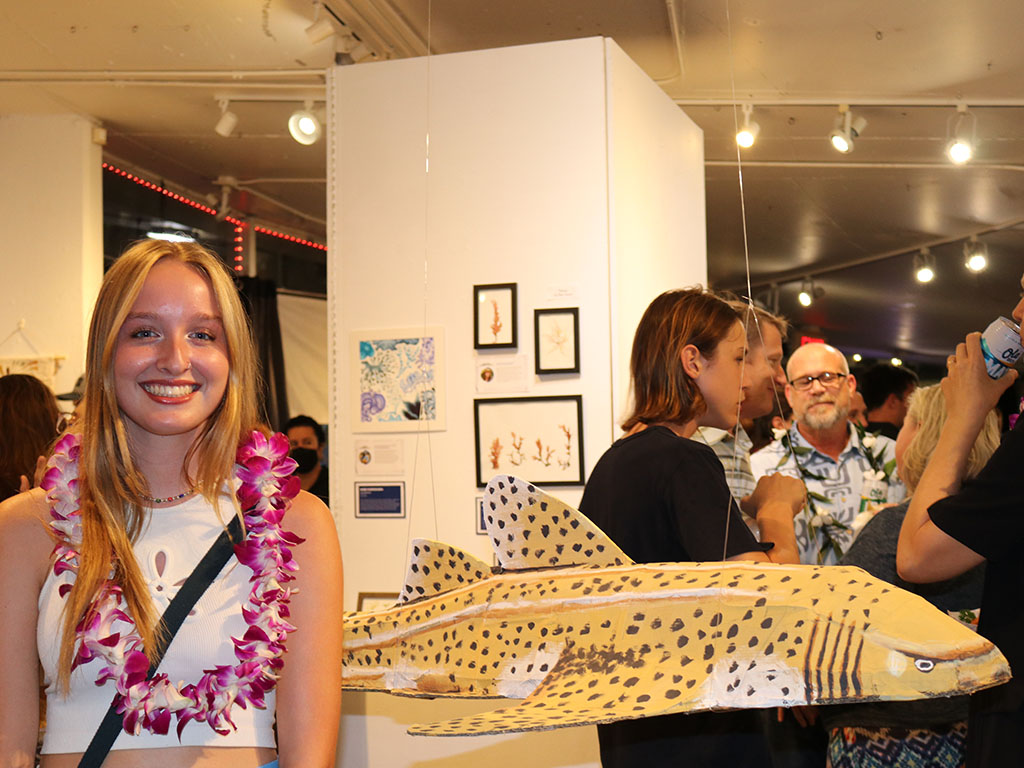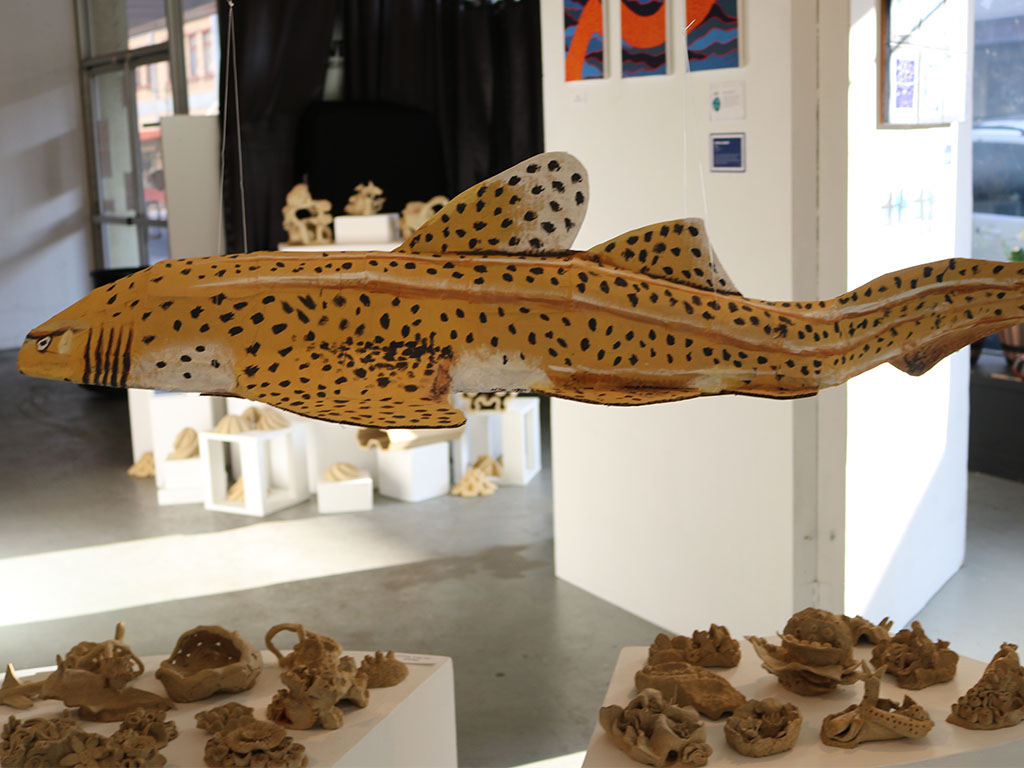In the heart of Honolulu's vibrant Chinatown Historic District, The ARTS at Marks Garage recently served as the canvas for the University of Hawaiʻi at Mānoa Sea Grant College Program's second annual sci-art exhibition. This celebration of the intricate intersection between art and marine science was not just a showcase of creativity but a testament to the profound connection between humanity and the oceans. Among the talented artists featured, Lily Rademacher, a marine biology student at HPU, stood out as a beacon of talent and insight. Beyond her captivating artwork, Rademacher shared her unique perspective on the symbiotic relationship between art and marine biology.
From Minnesota to the Pacific: Her Journey to HPU
Originally from the landlocked state of Minnesota, Rademacher’s journey to the shores of Hawaiʻi was fueled by a childhood dream of studying marine biology amidst the vastness of the Pacific Ocean. “I have always wanted to go to college in Hawaiʻi since I was little, and an island in the middle of the ocean, filled with life, is a great place to study marine biology,” she shared.
Embracing the vibrant marine life of Hawaiʻi, Rademacher has immersed herself in the study of oceans, gaining a deeper understanding of marine ecosystems and the various life forms within them. Her journey at HPU has been a transformative experience, shaping her aspirations within the field.
The SeaGrant Art Exhibit: An Environmental Art Project
Rademacher’s passion for both marine biology and art converged beautifully in her contribution to the SeaGrant Art Exhibit. Her artwork, crafted from recycled materials served a dual purpose – to advocate for recycling and shed light on the beauty of endangered creatures like the zebra shark.
“I wanted to make something that would make people look and think twice. Recycling is important, especially for the environment, but I also wanted to show people you can make beautiful things out of trash,” she explained.
The piece, made entirely from recycled cardboard, hot glue, and tape, depicted a zebra shark, emphasizing the need to appreciate and protect these magnificent creatures. Feedback on Rademacher’s piece was overwhelmingly positive and viewers were impressed by the design, size, and the unique choice of the zebra shark as the subject.
At the Intersection of Marine Biology and Art
According to Rademacher, there is a symbiotic connection between the two disciplines of art and marine biology. “Art can help people feel and see things differently, and with the marine biology aspect, it may provide awareness for threats the ocean is experiencing,” she explained. The fusion of the two can help artists convey complex scientific concepts using different artistic representations, making the science behind the art more accessible to a broader audience.
As a marine biology student, Rademacher believes that art also plays a crucial role in conservation efforts. “Showing people that there are several important matters to take into hand can help with preserving and protecting marine life,” she asserted. Events like the SeaGrant Art Exhibit, in her view, bring communities together, evoke emotions, and instill a sense of duty to protect and appreciate the environment.
The event itself certainly captivated and educated an audience of scientists and artists alike. And Rademacher’s piece on the zebra shark stood as a testament to the power of art to communicate, evoke emotions, and foster a deeper connection with the wonders of the sea. Her dedication to both fields exemplifies the potential for creative expression to drive positive change in the realm of environmental awareness and conservation.
All photos courtesy of Maya Walton, University of Hawaiʻi Sea Grant College Program.




